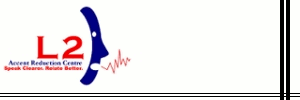The Ups and Downs of the Straight and Narrow: Rethinking Career Paths
By Amelia Chan, CHRP
Modern career paths resemble the game of Snakes and Ladders. As we advance along the board, ladders make for quick climbs and snakes counter-balance with apparently random pitfalls and setbacks. While opportunities do often emerge on the luck of a roll, even the best strategist is unable to avoid the proverbial snake bite.
The best laid plans can be laid awry by changes beyond our control – be they broad business shifts or more specific organizational downsizings. There are endless ups and downs and everyone’s story unfolds differently. What seems to be the most consistent element for all individuals is that of ‘change’ or the air of unpredictability. There simply is no set path.
The traditional approach to the human resources career plan has been quite rigid. This has resulted in the perception of defined job milestones and set pathways to professional success. In the quest to craft career success, individuals can easily get lost in the job title checklist, whereby progression is merely a collection of fancier labels. Such linearity lulls us with the promise of continued returns of advancement; unfortunately, life does not adhere to such regularity.
It isn’t like a cookbook recipe replete with an illustration of the finished product. Education and training are core ingredients, naturally, but there is no one list – aside perhaps from the CHRP for HR professionals. Nor do our careers come with step-by-step instructions complete with a guarantee of success. Like good recipes, our best career plans are just that – plans. Confusing plans and paths is all too common.
There ARE career paths to follow. However, by simply following a predetermined path, or sticking to a rigid plan, we are unlikely to encounter the deeper satisfaction of building careers with a broader perspective: one that embraces incorporating and learning from life’s lessons. We are also less nimble and more likely to see change in a negative light. This old school concept does not mesh well within our fast paced world where constant change is the norm and keeping pace demands fluidity.
The guidance counsellors who used career assessment tools to determine what career we should embark on didn’t really help us figure it out after all. Their approach implied that everything in life and work would be straight forward and easy to pegged out, so long as we followed the plotted course. If we didn’t have all the milestones lined, doom seemed inevitable. Of course, it is not.
The element that leads to career success is being in the moment of our current role, accepting the challenge by taking accountability and then stepping back to gain perspective on how it rounds out our development. What life skills counsellors and career coaches should be doing is equipping their charges with a good understanding of who they are as individuals; this includes the values they bring to their work and what they are passionate about as they progress. This awareness empowers people to capitalize on the opportunities that come their way beyond the obvious.
Your career plays a part in your self-discovery. You cannot become who you are without being impacted by what you do professionally. The key is remembering that the exploration should focus on being present in your life every step of the way. This may mean braving the road less traveled and taking an assignment in operations (because the opportunity presented itself). Or it could be that you accept a secondment to benefits administration (even though you did not see compensation analysis in your future). The sum of these experiences rounds out who you are and what doors may eventually open for you.
The best human resources professionals take all the skills and knowledge of life and incorporate them into effective people practices. This ability rarely comes from a set linear career path in the human resources field. It’s the rough patches and the stretch goals that create the learning and development because these personal discoveries help create the tools we can then apply professionally. By developing our own potential, our HR toolbox grows in kind – this provides invaluable support to furthering our leadership advancement.
We each carve out a path unique to our experiences. Many successful HR leaders began their careers in other occupations; these leaders embraced their life experiences and took their transferable skills into the human resources environment. Their focus on self development and leadership took them to where they are today more so than the titles accrued along the way.
Make no misunderstanding – it is important to have a career development plan. However, instead of having hard and fast rules about each step of progress, an individual should figure out the elements they need to get to their intended position or responsibility. By knowing our strengths and weaknesses, we can better determine where to focus our energies and build our technical expertise in the widest scope possible.
Don’t be afraid to take a little more time to learn the details in a role that doesn’t seem in direct line to your ultimate goal. You may be surprised how the extra skills you learn may end up making you stand out in the crowd for a more advanced position down the line. The key to developing a great career in human resources (and any other field) is enthusiasm for the work at hand and an open-minded attitude of how your occupational path will unfold. The mixed blessings and bittersweet changes due of unexpected turns in our fate are what give us the well-rounded background and appreciation of what we bring to the business equation.
Amelia Chan, principal of Higher Options, has experienced her share of unexpected twists and turns which has shaped her professional path and areas of expertise. She can be reached at amelia@hr-options.com.
PeopleTalk: Summer 2011







